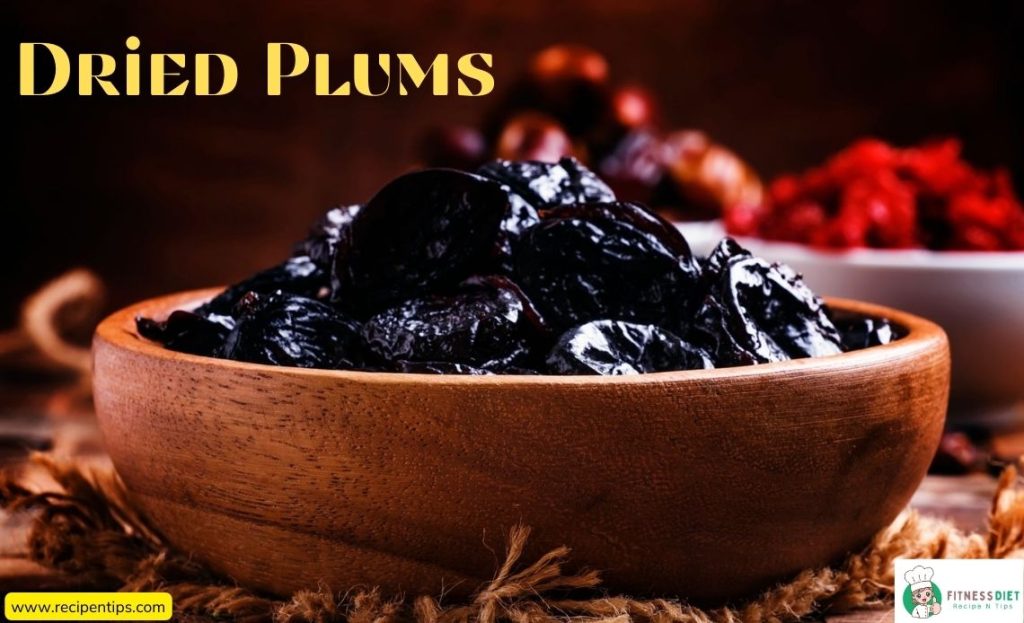A lot of people ask me, Which method of drying plums is better? Sun-drying or oven-drying? There are many factors to consider when drying fruit, including the taste and texture that you want to achieve. Let’s get into the secrets of the best-dried plums.
In this article, I will give you some helpful tips on how to dry plums in the sun and the oven so that you can choose the one that works best for your desired results!
What are dried plums?
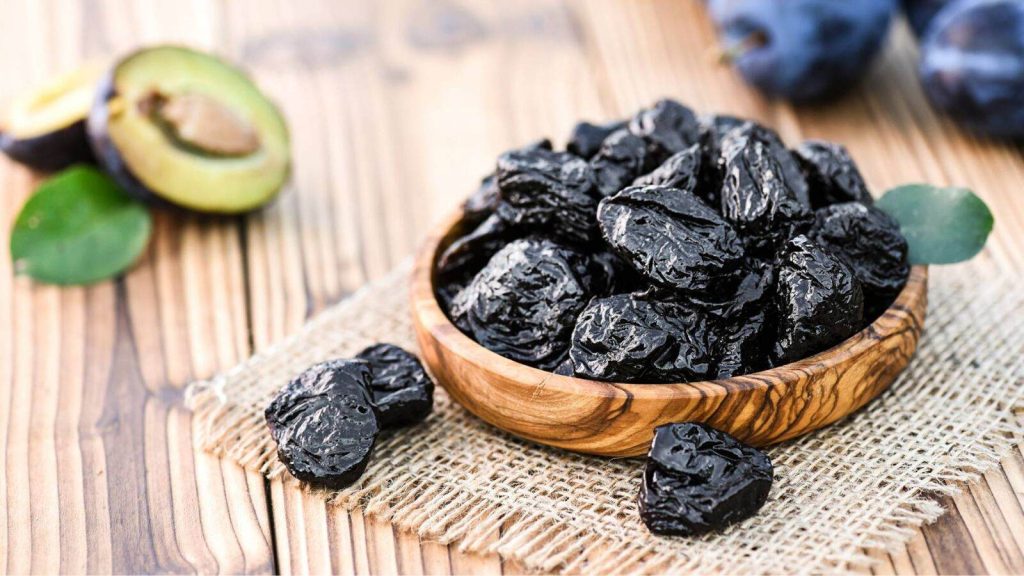
Dried plums, or prunes, are fruits that have been dried in a dehydrator or oven. The dehydration process preserves the fruit. It intensifies the flavor, creating a sweet and tart snack. Prunes are also high in nutrients such as Vitamin A, potassium, and dietary fiber.
Are dried plums good for you?
Dried plums, or prunes, are a great healthy snack to enjoy whenever you need a good pick-me-up. High in dietary fiber and naturally occurring sorbitol, dried plums help support healthy digestion.
Dried plums can also help with bone health due to the high amount of essential vitamins and minerals such as potassium, magnesium, vitamin K and more.
Additionally, studies have shown that consuming dried plums can help reduce cholesterol levels as well as symptoms associated with osteoarthritis.
Dried prunes vs dried plums, What is the difference between them?
The main difference between dried prunes and dried plums is the variety of plums used in their production. Prunes are typically made with European-type plums, while dried plums use ones that have a sweeter taste and a softer texture.
Prunes tend to have more dietary fiber than regular plums. But due to their natural tart flavor, they often need to be cooked or heavily sweetened before consumption.
On the other hand, dried plums are usually ready to eat because they have a lightly sweet taste, making them widely enjoyed snacks.
What are dried plums used for?
From breakfast to dessert, dried plums are great for baking or cooking. They are an easy ingredient you can use in dishes such as pies and cobblers, yogurt parfait bowls, muffins, smoothies, or salads.
Dried plums help increase dietary fiber, promoting regularity for healthy digestion by keeping you fuller for longer periods.
What are the benefits of eating dry prunes?
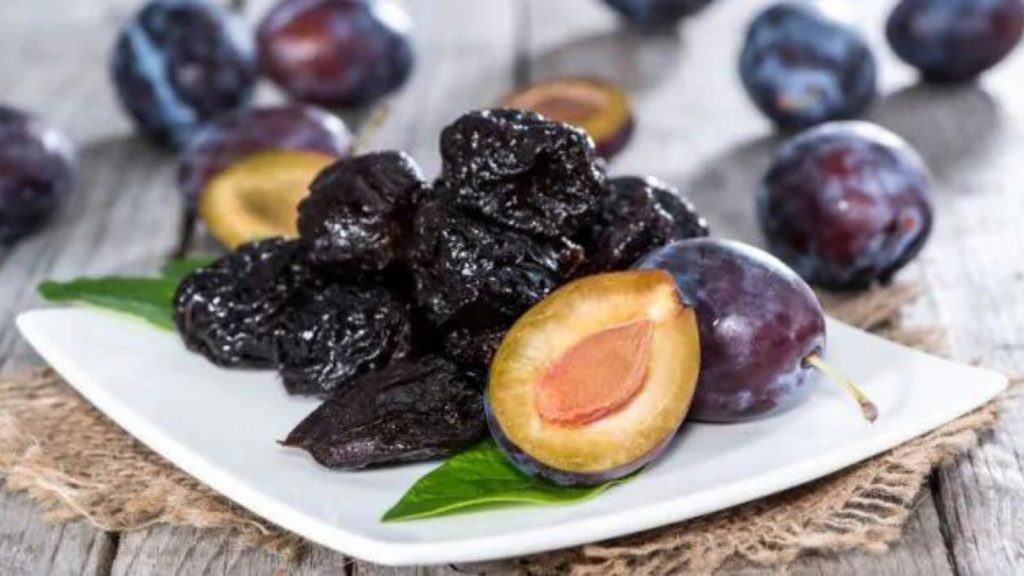
1. Dry prunes are a good source of fiber
Dry prunes are a good source of both soluble and insoluble fiber. Soluble fiber dissolves in water and helps to slow down digestion, while insoluble fiber does not dissolve in water and helps to add bulk to the stool.
Both types of fiber are important for maintaining a healthy digestive system.
2. Dry prunes can help to regulate blood sugar levels
Dry prunes contain a type of soluble fiber called pectin, which has been shown to help regulate blood sugar levels. Pectin slows down the absorption of sugar into the bloodstream, which can help to prevent spikes in blood sugar levels.
3. Dry prunes can help you lose weight
Because dry prunes are a good source of fiber, they can help you lose weight by making you feel fuller for longer. Fiber-rich foods take longer to digest, which means that you’ll feel full for longer after eating them.
Additionally, soluble fiber has been shown to reduce the number of calories absorbed from other foods.
4. Dry prunes can help improve bone health
Dry prunes are a good source of boron, a mineral that is essential for bone health. Boron helps the body absorb calcium, which is necessary for strong bones and teeth.
Additionally, boron has been shown to reduce the risk of osteoporosis, a condition characterized by weak bones.
5. Dry prunes can help improve cognitive function
The antioxidants present in dry prunes have been shown to improve cognitive function and protect the brain from damage caused by free radicals.
Additionally, the soluble fiber in dry prunes can help to decrease inflammation in the brain, which has been linked to Alzheimer’s disease and other forms of dementia.
6. Dry prunes can help fight cancer
The antioxidants present in dry prunes can help to protect cells from damage caused by free radicals, which can lead to cancer.
Additionally, the soluble fiber in dry prunes has been shown to bind with cancer-causing toxins in the colon and prevent them from being absorbed into the body.
Sun-Drying vs Oven-Drying-Which One is Better?
Sun-drying produces a more natural flavor with greater nutrient retention. But also is limited to sunny days with warm temperatures.
Conversely, oven-drying may take less time and permits drying when there is no sun available or during cooler temperatures, but it may not retain as much of the item’s original makeup.
Why sun-dry
The process of sun-drying preserves and concentrates fruit flavor while reducing sugar content, making it ideal for high-quality, naturally sweet fruit that’s in season (think apricots or cherries).
However, sun drying is a slow process – generally speaking, you’ll need about a week for each pound of fruit you’re drying – so timing can be important.
How do I choose what kind of plum to dry?
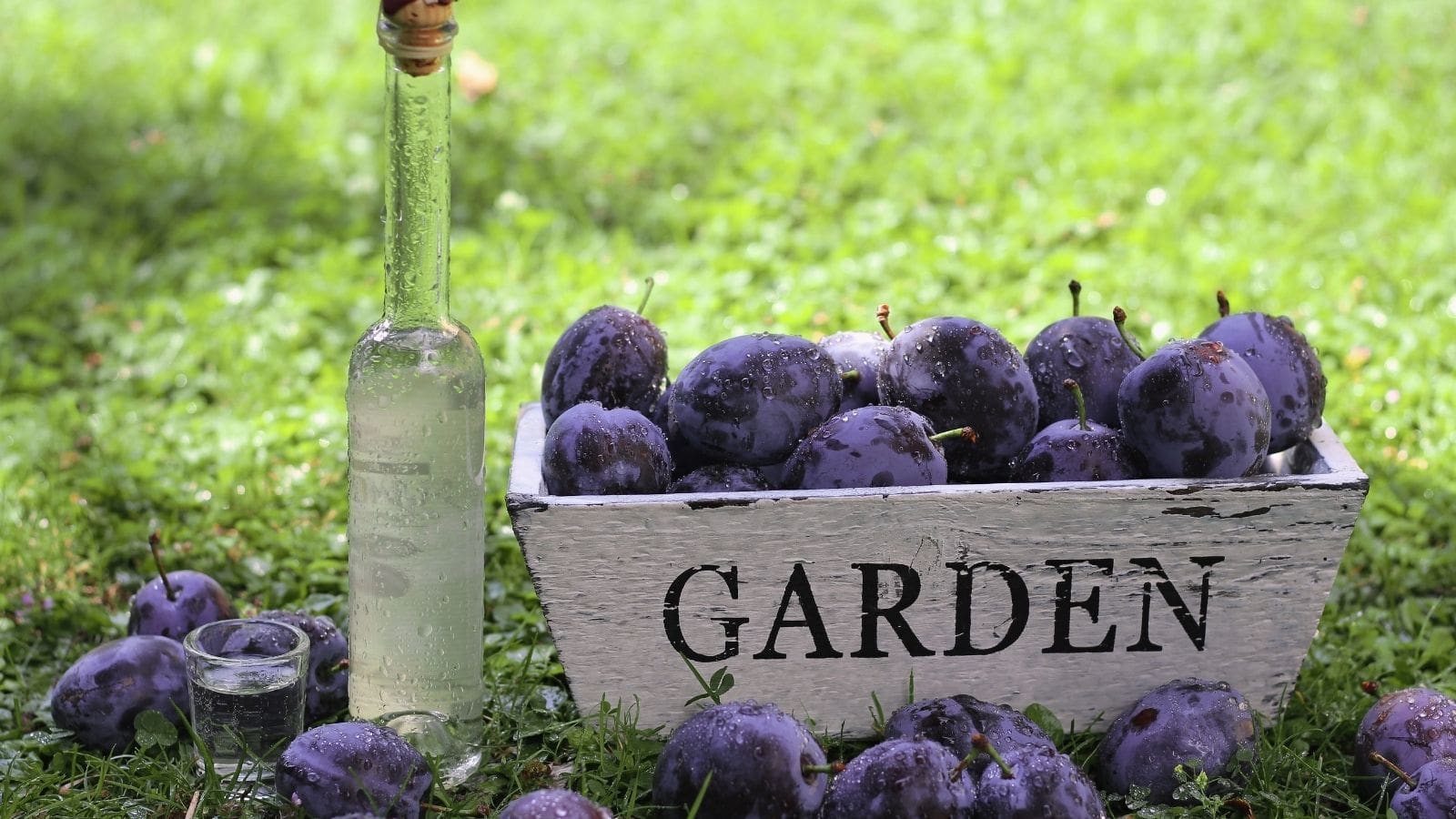
If you are looking for an intense sweetness, European-style plums such as Stanley or Italian Prune may be your best bet. For larger, eco-friendly options, Golden or Black Diamond varieties are excellent choices.
How to make dried plums in the oven?
- Preheat the oven to 375 degrees Fahrenheit.
- Line a baking sheet with parchment paper and spread out the plums in a single layer.
- Bake for about 45 minutes or until the plums are dried and shrunken.
- Remove from the oven and let cool completely before storing in an airtight container.
- Enjoy!
How to make dried plums in the sun?
Making dried plums in the sun is a great way to preserve them. With just a few days of effort and patience, you can enjoy your favorite plums all year round.
- The first step is to select the freshest, ripest plums available – they should have a deep reddish or purple hue.
- Once you’ve picked out your desired quantity of plums, give them a thorough rinse and pat them dry with paper towels. Next, cut the plums into halves or quarters and spread them out on an uncovered plate or flat surface that can fit in direct sunlight for several hours each day.
- Allow 3-4 days for the plum pieces to air dry completely before removing them from the sun and storing them in an airtight container.
How long do dried plums last?
Dried plums can last anywhere from 6 months to a year if stored properly in a cool and dry environment. Since they are already dried, they don’t require the same level of refrigeration or packaging as fresh ones do.
To maximize the longevity of your dried plums, try storing them without too much air exposure for optimal preservation. These plums make an excellent snack because of their naturally sweet flavors, as well as their being rich in antioxidants and fiber.
Dried prunes vs plums, which is better?
The main difference between dried prunes and dried plums is that they are great snacks. They contain significant amounts of beneficial antioxidants and dietary fiber.
On the other hand, plums retain more of their nutritional content when dried, such as Vitamin C, potassium, and Vitamin K. If you’re looking for something sweet, chewy, and nutrition-packed with fewer calories, prunes are an excellent choice.
How to eat salted dried plums?
Eating salted dried plums can be a delicious and unique way to get your daily dose of vitamins. To begin, you’ll want to soak the plums in warm water for 10-15 minutes or until they are soft enough to work with. When the plums have softened, remove the pits and cut them into smaller pieces. Finally, season the pieces with your preferred combination of sugar, cinnamon, or other spices, and enjoy!
What is a good substitute for dried plums?
Dried prunes are an excellent substitute for dried plums. They have a similar taste and texture but with the advantage of not having tartness or puckering associated with regular dried plums.
Prunes are especially good for baking because they hold onto their shape better than dried plums and retain some of their natural sweetness.
Furthermore, you don’t need to soak prunes before use, whereas dried plums typically require soaking to become soft enough for baking and other cooking uses.
What nutrients are in dried plums?
Dried plums, frequently referred to as prunes, are an underappreciated nutritious food that can be enjoyed all year round. Not only are they low in calories and fat, but they are also high in antioxidants, vitamins, and minerals that support a multitude of bodily functions.
In them, you will find a good amount of dietary fiber to improve digestion; copper, phosphorus, and iron for bone health; and niacin (vitamin B3) for healthy skin. Moreover, dried plums can provide a healthy dosage of potassium to balance the sodium content in many diets.
How to use dried plums for glowing skin?
For optimal shelf life, put the dried plums into an airtight container and store them in a cool, dark place. If you plan on keeping them for more than 6 months, it’s best to keep them in the refrigerator or freezer.
How to store dried plums?
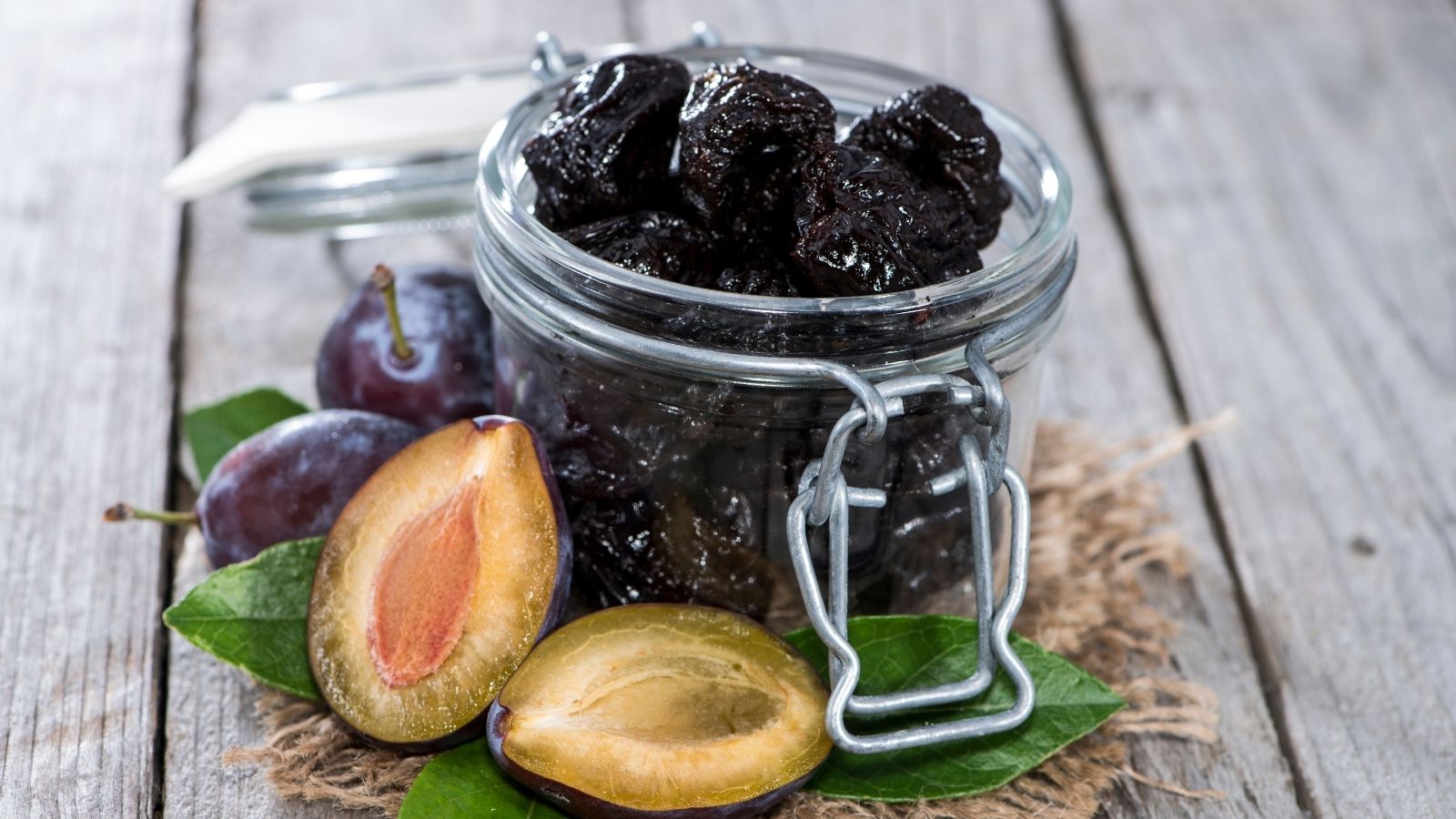
To preserve the best flavor and texture, carefully transfer the dried plums into an airtight container or resealable plastic bag. Make sure that any exposed fruit is tightly covered to protect it from moisture and its natural oils.
Being sure not to pack them in too tightly will keep them from sticking together over time. If you’re able to, try keeping the dried plums in the dark, dry place where they will be at their least likely to go bad prematurely.
How long do dried pitted plums last?
As it turns out, if kept properly, dried pitted plums will stay fresh for up to six months. To ensure maximum longevity, store them in a cool and dry place, away from any direct sunlight or heat sources.
Vacuum-sealed packaging also helps to extend its shelf life by minimizing moisture inside the package.
How many dried plums to eat for constipation?
The amount of dried plums needed depends on the individual, their diet, and the typical severity of constipation episodes. For most people, a single serving of 8-12 dried plums per day is sufficient to start relieving constipation symptoms.
However, if your condition persists after several days of eating this recommended amount, it may be necessary to increase your intake to up to 24 dried plums in a day.
Despite the renowned health benefits that come with eating prunes, it’s important not to overdo it, as consuming excessive amounts can cause bloating and diarrhea instead of relieving constipation.
How many dried plums should I eat a day?
As a general rule of thumb, most people can safely eat up to three servings of three or four dried plums each day. Eating more than this could lead to adverse gastrointestinal issues for some people, as dried plums contain high levels of fiber and fructose.
Always listen to your body when adding new items to your diet and adjust accordingly if needed for optimal health and well-being.
Can you freeze-dried plums?
After drying the plums, all you need to do is put them in an airtight bag and store them in the freezer. The freezing process helps maintain the texture, shape, and nutritional value of dried plums.
Additionally, frozen, dried plums are very convenient for recipes such as smoothies or baked goods; just toss the desired amount straight from your freezer into whatever recipe you may be making!
Recipes using dried plums
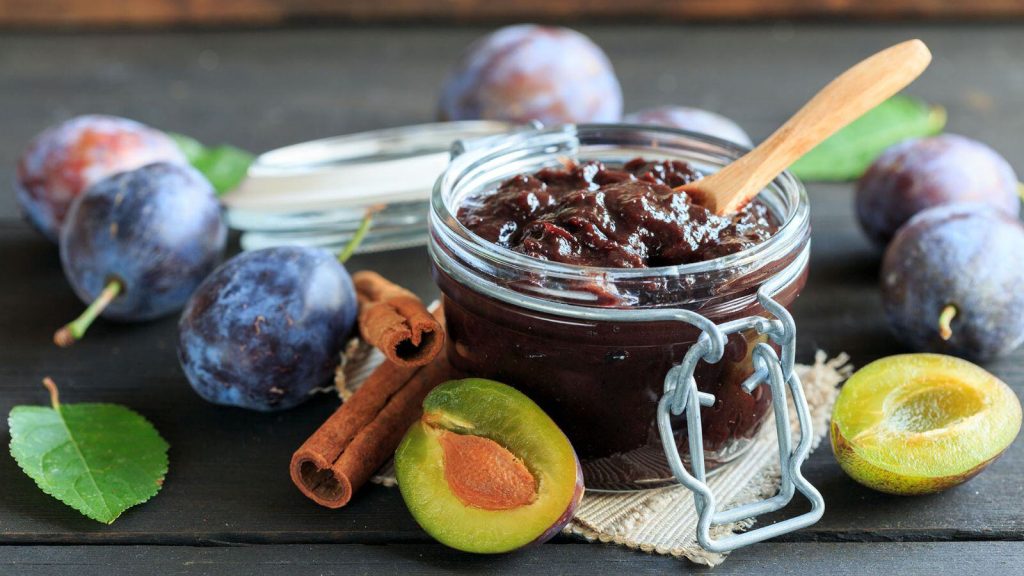
1. Dried Plum and Almond Biscotti
These biscotti are made with almond flour, making them gluten-free as well as delicious. The addition of dried plums gives them a lovely sweetness and a chewy texture.
2. Dried Plum and Rosemary Focaccia
This focaccia is infused with the flavors of rosemary and dried plum. It’s the perfect accompaniment to a bowl of soup or salad.
3. Dried Plum and Orange Scones
These scones are made with whole wheat flour and are studded with dried plums and oranges. They’re perfect for a brunch or afternoon snack.
4. Dried Plum and Chocolate Cake
This cake is made with dark chocolate and dried plums, giving it a deep, rich flavor. It’s perfect for a special occasion or dinner party.
5. Dried Plum and Oatmeal Cookies
These cookies are made with rolled oats, making them chewy and hearty. The addition of dried plums gives them a lovely sweetness.
6. Dried Plum and Walnut Bread
This bread is made with whole wheat flour and walnuts, making it nutritious as well as delicious. The addition of dried plums gives it a lovely sweetness.
7. Dried Plum Jam
This jam is made with just three ingredients – sugar, lemon juice, and dried plums. It’s the perfect spread for toast or scones.
8. Dried Plum Chutney
This chutney is made with onions, garlic, ginger, and dried plums. It’s the perfect condiment for Indian food or as a dipping sauce for appetizers.
9. Spiced Dried Plums
These dried plums are flavored with cinnamon, cloves, and nutmeg. They make a great snack on their own or can be added to a trail mix or yogurt.

